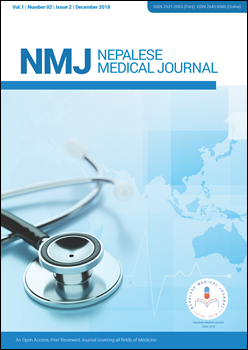Diabetes Mellitus And Glycosylated Hemoglobin A1c
DOI:
https://doi.org/10.3126/nmj.v1i2.21744Keywords:
Coronary artery disease, Diabetes, Glycosyalated, HbA1c, Hemoglobin, Nephropathy, Prediabetes, RetinopathyAbstract
Diabetes mellitus is a global health problem in 21st century. The incidence of diabetes mellitus is in rise and is estimated to be more prevalent in coming years. It is becoming one of the most common non-infectious and non-neoplastic causes of morbidity and mortality. Various complications are associated with diabetes mellitus. With control of blood glucose level, complications of diabetes mellitus can be minimized. In different time frame, different parameters and level have been used to diagnose diabetes. Glycosylated hemoglobin A1c is one of the reliable indicator of chronic hyperglycemia. In 2011, World Health Organization has included HbA1c in the diagnostic criteria. Various methods are used to detect the level of HbA1c.
Glycosylated hemoglobin is being used in the management of diabetes mellitus. Various studies have shown its prognostic implication in micro and macrovascular complications. Here we discuss various methods of estimation of HbA1c, various role of HbA1c in the management of Diabetes Mellitus and limitation of the test.
Downloads
Downloads
Published
How to Cite
Issue
Section
License
This license enables reusers to distribute, remix, adapt, and build upon the material in any medium or format, so long as attribution is given to the creator. The license allows for commercial use.
Copyright on any article published by Nepalese Medical Journal is retained by the author(s).
Authors grant Nepalese Medical Journal a license to publish the article and identify itself as the original publisher.
Authors also grant any third party the right to use the article freely as long as its integrity is maintained and its original authors, citation details and publisher are identified.




